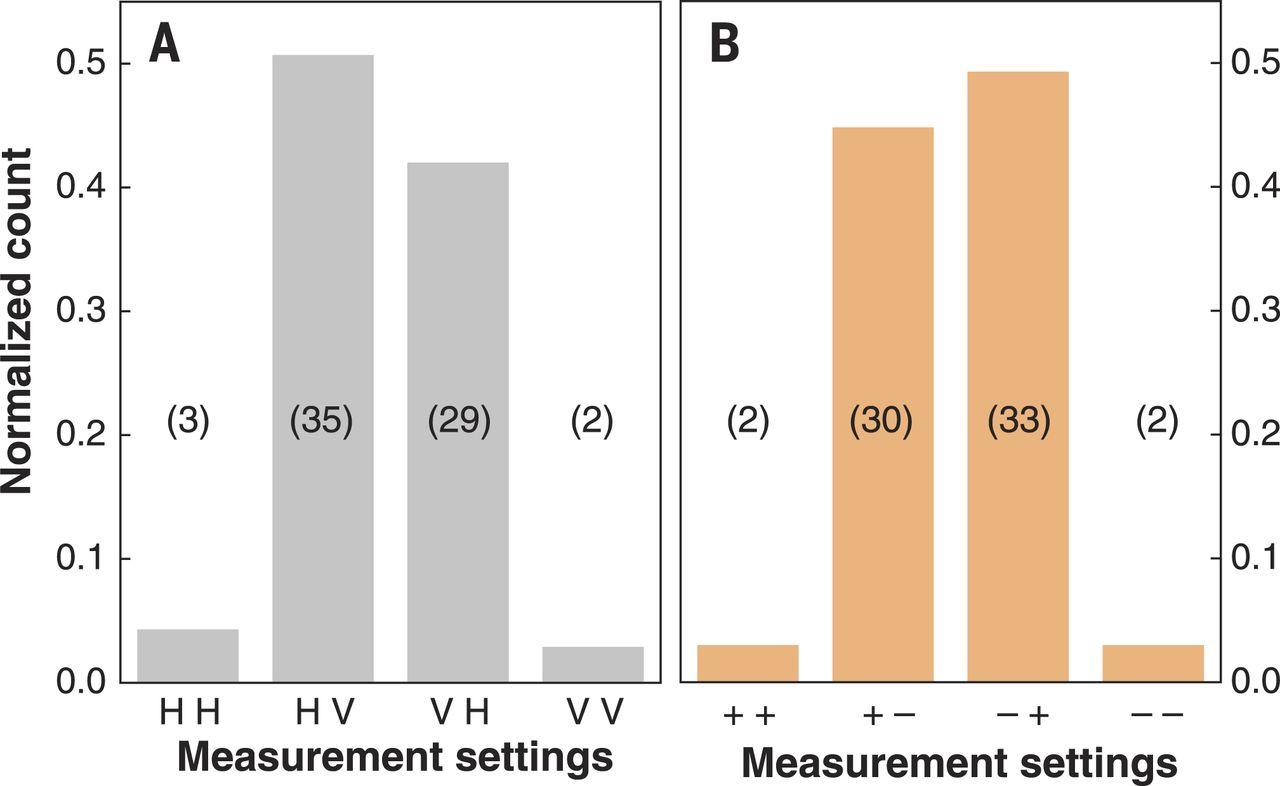Satellite-based entanglement distribution over 1200 kilometers
IF 45.8
1区 综合性期刊
Q1 MULTIDISCIPLINARY SCIENCES
引用次数: 956
Abstract
Long-distance entanglement distribution is essential for both foundational tests of quantum physics and scalable quantum networks. Owing to channel loss, however, the previously achieved distance was limited to ~100 kilometers. Here we demonstrate satellite-based distribution of entangled photon pairs to two locations separated by 1203 kilometers on Earth, through two satellite-to-ground downlinks with a summed length varying from 1600 to 2400 kilometers. We observed a survival of two-photon entanglement and a violation of Bell inequality by 2.37 ± 0.09 under strict Einstein locality conditions. The obtained effective link efficiency is orders of magnitude higher than that of the direct bidirectional transmission of the two photons through telecommunication fibers.

基于卫星的 1200 公里缠结分布
长距离纠缠分发对于量子物理学的基础测试和可扩展量子网络都至关重要。然而,由于信道损耗,以前实现的距离仅限于 ~100 公里。在这里,我们展示了通过两个总长度从 1600 公里到 2400 公里不等的卫星到地面下行链路,将纠缠光子对分发到地球上相距 1203 公里的两个地点。在严格的爱因斯坦定位条件下,我们观测到了双光子纠缠的存活率和贝尔不等式的违反率(2.37 ± 0.09)。所获得的有效链接效率比通过电信光纤直接双向传输两个光子的效率要高出几个数量级。
本文章由计算机程序翻译,如有差异,请以英文原文为准。
求助全文
约1分钟内获得全文
求助全文
来源期刊

Science
综合性期刊-综合性期刊
CiteScore
61.10
自引率
0.90%
发文量
0
审稿时长
2.1 months
期刊介绍:
Science is a leading outlet for scientific news, commentary, and cutting-edge research. Through its print and online incarnations, Science reaches an estimated worldwide readership of more than one million. Science’s authorship is global too, and its articles consistently rank among the world's most cited research.
Science serves as a forum for discussion of important issues related to the advancement of science by publishing material on which a consensus has been reached as well as including the presentation of minority or conflicting points of view. Accordingly, all articles published in Science—including editorials, news and comment, and book reviews—are signed and reflect the individual views of the authors and not official points of view adopted by AAAS or the institutions with which the authors are affiliated.
Science seeks to publish those papers that are most influential in their fields or across fields and that will significantly advance scientific understanding. Selected papers should present novel and broadly important data, syntheses, or concepts. They should merit recognition by the wider scientific community and general public provided by publication in Science, beyond that provided by specialty journals. Science welcomes submissions from all fields of science and from any source. The editors are committed to the prompt evaluation and publication of submitted papers while upholding high standards that support reproducibility of published research. Science is published weekly; selected papers are published online ahead of print.
 求助内容:
求助内容: 应助结果提醒方式:
应助结果提醒方式:


